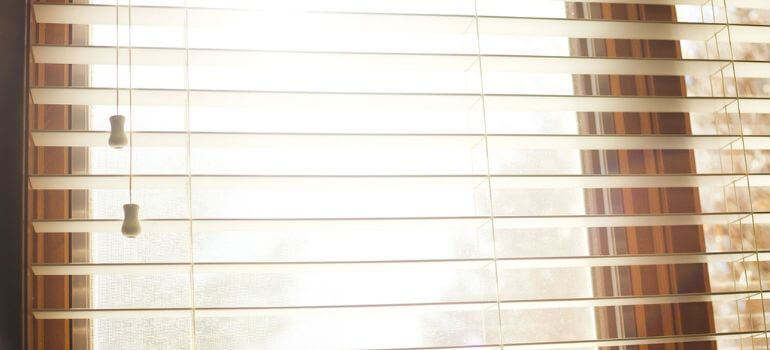Blinds play a crucial role in enhancing the aesthetics of our living spaces while providing practical benefits like light control and privacy. When it comes to choosing blinds, one common dilemma is deciding between 2-inch and 2.5-inch blinds. In this article, we’ll dive deep into the pros and cons of each size, considering factors like aesthetics, light control, materials, installation, and more.
Understanding Blind Sizes
Before we delve into the specifics, let’s understand how blind sizes are measured. The size refers to the width of the individual slats on the blinds. This measurement holds significance as it determines how much light enters the room and the overall look of your windows.
2-Inch Blinds: Pros and Cons
Advantages of 2-Inch Blinds
- Enhanced aesthetics: The narrower slats offer a sleek and contemporary look.
- Versatility: Suitable for various window sizes and styles.
Considerations and Drawbacks
- Limited light control: May not provide as much light blockage as wider slats.
- Cleaning challenges: Cleaning individual narrow slats can be time-consuming.
2.5-Inch Blinds: Pros and Cons
Advantages of 2.5-Inch Blinds
- Robust light control: Ideal for rooms where complete darkness is desired.
- Easier to clean: Wider slats make cleaning a more straightforward task.
Considerations and Drawbacks
- Aesthetic considerations: Might appear bulky on smaller windows.
- Limited style versatility: May not suit all interior design themes.
Aesthetics and Style
The size of blinds significantly influences the aesthetics of a room. While 2-inch blinds offer a modern and streamlined appearance, 2.5-inch blinds contribute to a more traditional and substantial look. Consider the existing style of your home when making your choice.
Light Control and Privacy

For those prioritizing light control and privacy, the width of the blinds is a crucial factor. 2-inch blinds may allow some light to filter through, making them ideal for spaces where natural light is welcomed. On the other hand, 2.5-inch blinds are better suited for bedrooms or areas where maximum light blockage is necessary.
Material Matters
Blinds come in various materials, each with its unique characteristics. The choice of material should complement the selected blind size. For instance, wooden 2-inch blinds may exude warmth and elegance, while metal 2.5-inch blinds can convey a more industrial and modern feel.
Installation Tips
When installing blinds, ensure they fit snugly within the window frame. For 2-inch blinds, a precise fit emphasizes their sleek design. In contrast, 2.5-inch blinds may require slightly more space due to their wider slats.
Maintenance and Cleaning
Regular maintenance ensures the longevity of blinds. Dusting and occasional deep cleaning are essential. The wider slats of 2.5-inch blinds make cleaning more accessible, whereas the narrower slats of 2-inch blinds may require extra attention.
Cost Considerations
Investing in the right window blinds can significantly impact your home’s aesthetics and functionality. However, one crucial aspect that often influences the decision-making process is the cost. In this section, we’ll delve into the cost considerations associated with 2-inch and 2.5-inch blinds, helping you make an informed and budget-friendly choice.
Discussing the Cost Differences
The price of blinds is influenced by various factors, with size being a primary determinant. Generally, 2-inch blinds tend to be more budget-friendly compared to their 2.5-inch counterparts. The reasons behind this cost difference can be attributed to the materials used, manufacturing complexity, and the overall market demand for each size.
Factors Influencing Pricing
- Material Quality: High-quality materials often come at a higher cost. Consider the material used in the slats and frames when assessing the overall price.
- Manufacturing Complexity: The production process for wider slats in 2.5-inch blinds may involve more intricate steps, contributing to increased manufacturing costs.
- Market Demand: If there is a higher demand for a specific size, manufacturers might adjust prices accordingly. Understanding market trends can provide insights into potential price fluctuations.
Smart Budgeting: Finding the Balance
While it’s natural to consider the upfront cost of blinds, it’s equally important to evaluate the long-term benefits they offer. Cheaper blinds may require replacement sooner, leading to additional costs over time. On the other hand, investing in slightly pricier, high-quality blinds can result in enhanced durability and longevity.
Cost-Effective Options
- 2-Inch Blinds: Ideal for those on a tighter budget without compromising on style and functionality. Many affordable yet durable options are available in this size category.
- 2.5-Inch Blinds: While slightly pricier, the broader slats and potential added features may justify the higher cost for those seeking long-term value.
Personalizing within Budget
Blinds come in various materials, colors, and styles, allowing for customization within different budget ranges. Consider your preferences and the overall aesthetic you aim to achieve, then explore options that align with both your style and budget.
Taking Advantage of Sales and Discounts
Keep an eye out for sales and discounts offered by reputable blind manufacturers. Timing your purchase during promotional periods can significantly reduce the overall cost, allowing you to acquire high-quality blinds at a more budget-friendly price.
Popular Brands and Reviews
Explore reputable brands known for producing quality blinds. Customer reviews can provide valuable insights into the performance and durability of blinds from different manufacturers.
Customization Options
Both 2-inch and 2.5-inch blinds offer customization options, allowing you to choose colors, materials, and additional features. Personalize your blinds to match your unique style and preferences.
Comparing Energy Efficiency
Consider the energy efficiency of blinds, especially if you live in an area with extreme temperatures. While both sizes contribute to insulation, 2.5-inch blinds may offer slightly better energy efficiency due to their wider slats.
Customer Satisfaction Stories
Real-life stories from satisfied customers can offer valuable perspectives. Hearing about the experiences of others who have chosen either 2-inch or 2.5-inch blinds can assist you in making a well-informed decision.
Conclusion
In the end, the choice between 2-inch and 2.5-inch blinds boils down to personal preferences, the aesthetic you wish to achieve, and the specific needs of each room. Whether you opt for the sleek modernity of 2-inch blinds or the robust traditionalism of 2.5-inch blinds, ensure that your choice aligns with your overall design vision and functional requirements.
Now, equip yourself with the knowledge to make the right decision and transform your living spaces with the perfect blinds.
FAQs
Absolutely! Mixing blind sizes can add a dynamic and eclectic touch to your overall home decor.
Yes, many manufacturers offer eco-friendly materials for both blind sizes.
Generally, yes. The wider slats of 2.5-inch blinds contribute to better insulation.
Installation difficulty varies, but many people find it manageable as a DIY project. However, if you’re unsure, hiring a professional is always an option.
Yes, most reputable brands offer child-safe features for both blind sizes, ensuring the safety of your little ones.



